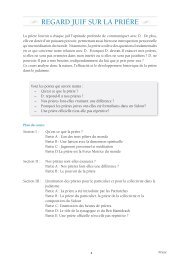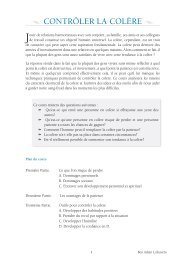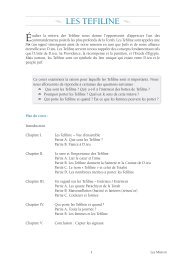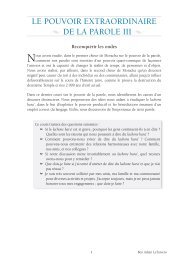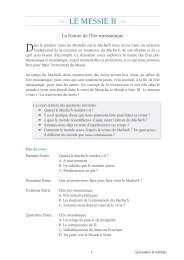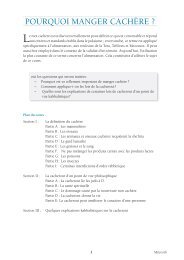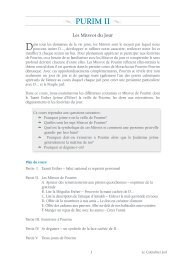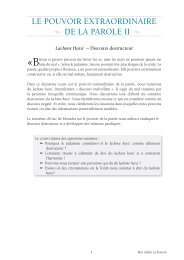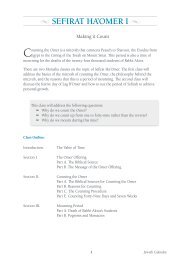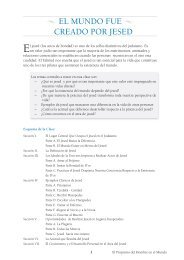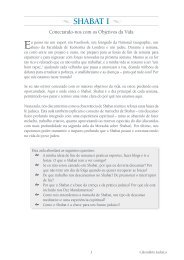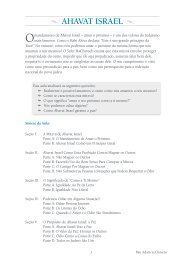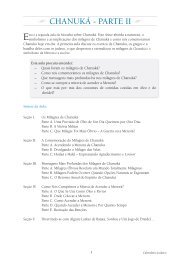THE SYSTEM OF HALACHAH JEWISH LAW I - Morasha Syllabus
THE SYSTEM OF HALACHAH JEWISH LAW I - Morasha Syllabus
THE SYSTEM OF HALACHAH JEWISH LAW I - Morasha Syllabus
You also want an ePaper? Increase the reach of your titles
YUMPU automatically turns print PDFs into web optimized ePapers that Google loves.
The SySTem of halachah – JewiSh law: i<br />
3. Rambam, Sefer haMitzvot, Shoresh aleph – The teachings of the prophets have the status of<br />
rabbinic law.<br />
All the laws which the prophets instituted after<br />
Moshe have the status of rabbinic law.<br />
The System of Halachah - Jewish Law 22<br />
ונבר השמ רחא ודמעש ה”ע םיאיבנה ונקתש המ לכש<br />
.ןנברדמ ןכ םג אוה<br />
Although the laws of the prophets are generally regarded as rabbinic (see the Ramban’s Glosses to Rambam’s<br />
Shoresh #2, who maintains some laws of the prophets have the status of Torah law), the laws of the prophets<br />
are viewed even more stringently than Torah laws.<br />
4. Chofetz Chaim, Shulchan aruch, aruch Chaim, Shaar ha’Tzion, 242:1 – Rabbinic law is not<br />
taken lightly.<br />
Rabbinic law is viewed more stringently than<br />
Torah law.<br />
.הרות ירבדמ רתוי םירפוס ירבד םירומחש<br />
This means that the Torah itself commands us to obey the institutions of the rabbis (Devarim 17:11), yet<br />
those ordinances have the status of rabbinic law, and the principle of safek derabanan lekula (in certain<br />
circumstances we are more lenient with rabbinic laws) applies to them. The laws of the prophets codified in<br />
the Sifrei Neviim (books of the prophets) are called mitzvot m’divrei kabbalah, which have a status slighter<br />
higher than other rabbinic law.<br />
The prophets instituted laws to strengthen Torah law. For example, the Torah commands sanctifying Shabbat<br />
and avoiding “work,” but it makes no mention of the concepts of honoring (Kavod) or delighting (Oneg) in<br />
Shabbat. These concepts were instituted by the prophet Yeshaya/Isaiah (58:13-14). Nach thereby serves as a<br />
secondary source for learning about Biblical commandments.<br />
Nach can also be used to sharpen our understanding of Biblical laws. For instance, the Torah defines the<br />
responsibility for damage caused by one’s animals. One of the acts mentioned in the Torah is called negicha<br />
(Shemot 21:28). From the Torah itself it is not clear exactly what kind of act constitutes negicha, but from<br />
the use of this word in Nach (Melachim/Kings I 22:11) the Talmud derives that it must be an act of goring<br />
with the horns (see Bava Kamma 2b).<br />
PaRT C. nevi’iM vS. KeTuviM<br />
We have discussed the difference between the laws in the Torah and in the Books of Prophets that followed<br />
it, but what is the difference between Nevi’im and Ketuvim? Prophecy involved a vision experienced<br />
by the Prophet while asleep or in a trance, whereas Ketuvim were written on a lower level of Heavenly<br />
communication called Ruach HaKodesh, Divine Inspiration, granted to a person while he or she was fully<br />
conscious.<br />
1. Rambam, Mishneh Torah, hilchot Yesodei haTorah (fundamental Principles of Torah) 7:2-3 –<br />
Prophecy comes through a vision or dream.<br />
There are many different levels of prophecy. Just<br />
as some Sages are wiser than others, although<br />
they are each wise, so too some prophets are<br />
greater than others, although they all have<br />
attained the power of prophecy.<br />
םכח המכחב שיש ומכ :ןה תולעמ תולעמ ,םיאיבנה<br />
.איבנמ לודג איבנ האובנב ךכ ,ורבחמ לודג



